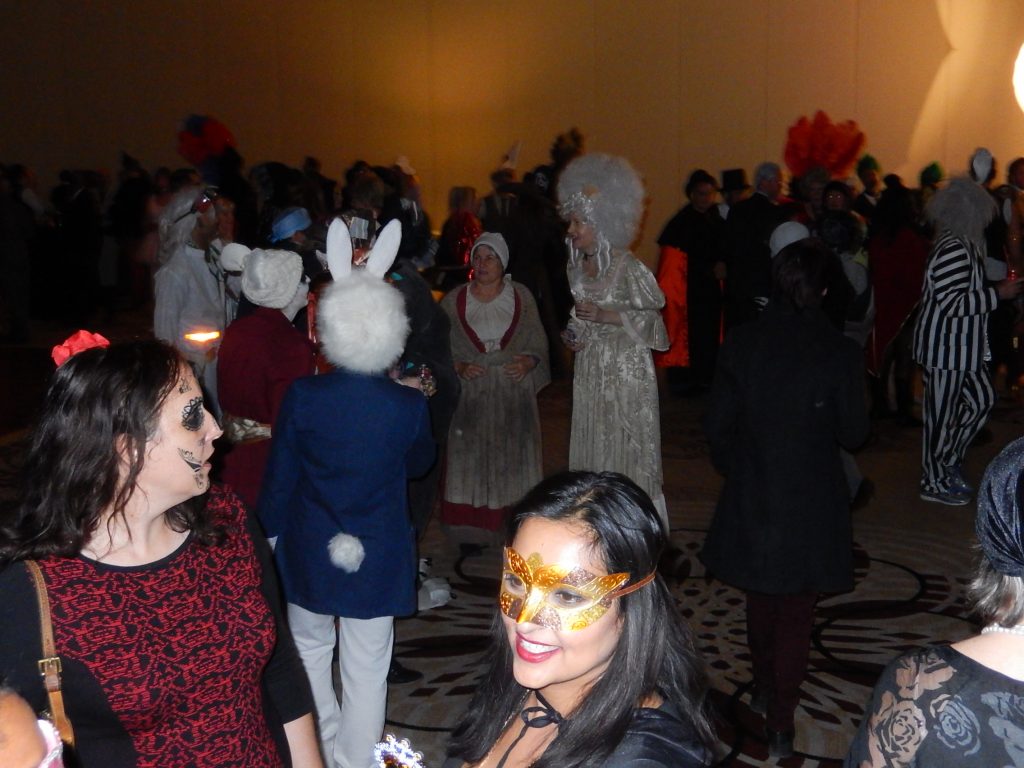Dina’s Diner 11/18/19
THE DEMISE OF LABELS
The New York Times had a long article headlined “Nonbinary Teenagers Are Finding a New Fit.” The article was in the paper on August 15, 2019. It appeared in the Thursday Styles section and it was ostensibly about clothing but I think it made a broader more important point.
The Times pointed out, “In the beginning of this decade, gender confines felt fixed. Nonbinary was hardly part of the lexicon. Androgyny was reserved for subcultures and didn’t have a place in the teen and tween marketing machine. The word “nonbinary” became something people asked the internet about around 2014, making a steady upward climb to present day. More teenagers overall are identifying with nontraditional gender labels, according to a March 2018 study published in the journal Pediatrics.” A child psychiatry specialist, Jeremy Wernick, is quoted, “When we’re looking at trends that we might see in the community of youth who are identifying as nonbinary, what we really are seeing is a community of people who are just accepting the diversity of gender expression.”
The young people interviewed for the article appear to reject the old concept of “identifying” as some point on the gender spectrum. Where the old poles of transgenderism were female-to-male and male-to-female, the current generation of nonbinary youth don’t see any value in choosing an arbitrary point on a straight line anymore. Although neither the article nor the individuals featured mentioned it, one can imagine the idea of moving back and forth between points on the imaginary line. Lachlan Watson, an 18 year old actor who shows androgynous and even femme looks online is shown wearing a t-shirt with the slogan “Gender is Over! If you Want It.”
Getting back to the fashion focus of the article, the Times asks, “If people don’t have to exist in a binary [world], then why should fashion?” Singer Billie Eilish, 17, is cited as an inspiration for some nonbinary teens because she favors oversize, gender non-specific clothing in her public appearances. The Times again, “Deborah Tolman, a psychology professor at the City University of New York whose work focuses on teenage sexuality, thinks this wider-spread fashion movement is, for many teenagers, about playing with masculinity and femininity “while maintaining it at the same time.” True androgyny, she said, would suggest that the binary goes away. That there is no binary.”
A final thought was a neat wrap-up to the discussion. “Dr. Tolman called what is happening now “queering” fashion, because when you “queer” something — fashion, whatever — you’re getting out of those boxes. “And the point of queering things is not to be in those boxes,” she said. “Because if you keep your head in the boxes, you can’t actually think about this.”
THIRTY YEARS ON
The TGForum had a pictorial from Philadelphia’s Henri David Halloween Ball a few weeks ago. And on Halloween itself I received an email from a friend whom I met at the Ball many years ago. It was receiving that email that made me realize that the first Henri David Ball I attended was in 1989 – thirty years ago this year. [Editor’s Note: This year was the 51st Henry David Halloween Ball.]
Sometime in the late 1990s, at one of the Balls, I got talking and joking around with a woman named Debbie and her friends. In subsequent years, we always ran into each other on the crowded balcony area and renewed our annual friendship. At some point, we exchanged email addresses although we only checked in with each other right before Halloween to say “see you there.” When I moved away from Philadelphia, I never returned for the Halloween Balls. But Debbie has kept up the annual check-in with me just to say “hi” and that she misses seeing me on the balcony. It was while responding to her this year that I realized my first Henri David Ball was thirty years ago. I promised to remember her first next year instead of always being surprised when her annual email shows up on October 31st.
The Balls were filled with people I would only see once a year there. “Amanda” was a crossdresser who always wore a showgirl costume, with shimmery tights and tall stilettos to show off her really remarkable legs. There was a fellow (whose name I forget now) who was always nearly nude in an exotic primitive costume and headdress and high heels that was part-crossdressing, part-pagan god. Then there was the middle-aged guy I saw every single year I attended who would try chatting up crossdressers and drag queens, presumably to arrange some kind of tryst if anyone was receptive.
Debbie’s annual email also got me thinking that Henri David himself must now be in his 70s or close to it. He seemed to be in his forties during my Halloweening heydays oh so many years ago. So, flame on, Henri. Maybe I will make it back there again before my own 70s roll around.
THE BRIDE DID NOT WEAR WHITE
The New York Times Sunday Styles section had an article headlined “The Fabric of Nigerian Weddings.” It appeared on August 25, 2019. If you think expensive American weddings are elaborate affairs, the Nigerians have us beat — at least in the gown and fashion selections for the big day.
The Times followed a few Nigerian-American brides as they searched for authentic fabrics, a unique design for the dresses and head wraps, and other details to duplicate the large traditional Nigerian wedding events here in the states. “Nigerian weddings are full of color, vibrant, and are flashy,” said [bride-to-be] Dola Fatunbi, who has attended many traditional Nigerian weddings in her hometown. “Without your fabrics, you’re not having a traditional Nigerian wedding.” The Times reports, “Nigerian wedding ceremonies are especially opulent. Guest lists can number in the hundreds – a cultural holdover from Nigeria, where significant life events were typically community gatherings open to close relatives and loose acquaintances. With such a big audience, a bride aims to impart regality, vibrancy and thoughtfulness in each of her bridal looks.”
The brides often employ wedding planners who help them source the fabrics (only natural fibers are acceptable) from Asia and Europe, and sometimes send the designs and fabrics to Nigerian tailors for dressmaking. According to the Times report, one of the most important elements of the Nigerian bridal ensemble is the head wrap called the “gele.” “Geles are art – it is your crowning glory,” Mr. Hakeem Olaleye, a gele designer, said. “It’s as important as your hair. You can wear a cheap dress and have your head wrap beautifully done and no one will notice your outfit. Your gele is the focal point.”
In my last Diner, I wrote about crossdressers photographed in bridal mufti. Those are always the traditional white bridal designs. These Nigerian designs are exotic and colorful and seeing this article reminded me — again — how few African-heritage crossdressers there are compared to Caucasian, Asian and Latinos we see online. It would be a real treat to see a black crossdresser in one of these elaborate African fashions.
JUMP INTO THE ORDINARY
I saw an interesting take on Halloween in Japan in the online magazine Slate.com. The article appeared on November 1, 2019 and was titled, “Japan’s Mundane Halloween Party and the Glorious Aesthetics of the Everyday.”
The concept behind Mundane Halloween is to celebrate the everyday circumstances of life rather than the fantastical elements that fuel most Halloween costumes. According to the Slate article, the originators “kind of wanted to participate in the festivities of Halloween, but were too embarrassed to go all out in witch or zombie costumes. Instead, they wear wry, understated ‘costumes’ like ‘lady who tried too many makeup testers’ and ‘guy who is too shy to yell ‘bingo.” By the way, the Slate piece had photos of several of the mundane costumes mentioned in the article, like those mentioned above and throughout. It looks like the participants wear small identification tags with their themes so they don’t need to keep answering the same question (what are you?) each time someone approaches them. Who would ever guess that the guy who “dried his hands on his clothes” was dressed as a guy who dried his hands on his clothes?
Lest you think it’s all a goof, the cultural roots may go deeper. Slate points out that there is a field of philosophy called “Everyday Aesthetics” and it seems to have a stronger following in Asia than in the west. The Slate reporter also makes the point that Mundane Halloween may be a very Asian reaction to the excesses of American Halloween costuming. If only we could ask “the woman who showed up at the BBQ with no intention of helping out” which is one of the Mundane costumes featured in the article.
I like it. I would still rather go out as some exotic femme creature for Halloween myself but I appreciate the irony of “dressing up” as something completely ordinary. If you see a lady at a Halloween party holding a loaded cafeteria tray and she says that she is “the lady who can’t find a seat in the food court” you have to laugh — and maybe fall in love with someone that brilliant.
Japan is like the David Bowie of national cultures. Always one step ahead of everyone else. They went elaborate with Gothic Lolitas, Manga-inspired soft core porn models, and J-Pop boy and girl band sensations. Now, as the rest of the world is trying to catch up, they go small with Mundane Halloween. Who will be the first Diner reader to go out next year as “crossdresser whose pantyhose waistband keeps rolling down”? There isn’t anything aesthetic about that but it sure as hell is mundane — and too often true for so many of us.
89 KEYS TO SUCCESS
I recently saw a photo of concert pianist Khatia Buniatishvili and while doing a little extra reconnaissance came across a photo of another concert pianist, Lola Astanova. As you can see, these ladies are young and full of sex appeal. A few years ago, I wrote about Yuja Wang, the original sexy classical pianist.
What does the topic of sexy concert pianists have to do with crossdressing? Not much, really. Except that seeing women wearing eye-catching gowns, displaying generous cleavage, or flashing a lot of leg in a staid classical music concert is, in my mind, akin to wearing drag in public. Imagine how thrilling it might be to walk across a large concert stage, dressed in something that is designed to show you off to the maximum advantage, and knowing you’re about to make that grand piano do remarkable things for an adoring audience.
Actually, there are a lot of attractive female classical musicians and opera singers. (You can Google that term and see for yourself.) And I like the combination of physical attractiveness and great talent but these other women aren’t as flashy about it as Yuja, Khatia, and Lola. And I do like flashy as a counterpoint to stodgy.
There are 88 keys on a piano. The last key that brings a little fun to concert success is hotness.
Like to make a comment? Login here and use the comment area below.
Category: Transgender Fun & Entertainment, Transgender Opinion










